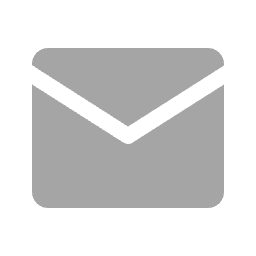| 12 | 0 | 12 |
| 下载次数 | 被引频次 | 阅读次数 |
在梳理中医辨伪历史脉络的基础上,总结各阶段的辨伪成就,分析辨伪方法的演进特点。中医古籍文献辨伪工作肇始于隋唐,发展于宋元,至明清及近现代已较为成熟。宋以前辨伪以零散质疑为主,两宋金元时期在疑经思潮下已开始综合性地运用辨伪方法;明清时期,在辨伪方法、辨伪书目上,古籍文献辨伪工作都取得了进一步发展,以《四库全书总目提要》《医学读书志》《世补斋医书》《中国医籍考》等最为突出;民国时期“古史辨”运动兴起,文献辨伪成为时代学术热点,以谢观所著《中国医学源流论》《中国医籍大辞典》为代表;当代谢仲墨的《历代医书丛考》为首部且唯一一部辨伪专书,意义重大,而其他辨伪成果以学术论文的形式被不断发表。中医古籍文献辨伪应当深入考察、实事求是、谨慎判断,以期正本清源,去伪存真。
Abstract:Based on review of the historical development of textual criticism in traditional Chinese medicine(TCM), this paper summarizes achievements in different periods and analyzes the evolution of critical methods. The work of identifying spurious texts in TCM literature began in the Sui and Tang dynasties, developed further during the Song and Yuan, and reached a relatively mature state in the Ming, Qing and modern periods. Before the Song dynasty, criticism was mostly scattered skepticism. During the Song, Jin, and Yuan dynasties, under the intellectual trend of questioning classical canons, more comprehensive methods of textual criticism were applied. During the Ming and Qing dynasties, significant progress was made both in methodology and bibliographic studies, with The General Catalogue of the Complete Library in Four Branches of Literature (《四库全书总目提要》), Medical Reading Notes (《医学读书志》), Shibu Zhai Medical Books (《世补斋医书》), and Studies of China's Medical Books (《中国医籍考》) as prominent examples. In the Republican era, the "Doubting Antiquity" movement brought textual criticism to the forefront of academic debate, represented by XIE Guan's Treatises on Origins and Developments of Traditional Chinese Medicine (《中国医学源流论》) and The Great Dictionary of Chinese Medical Books (《中国医籍大辞典》). In contemporary period, XIE Zhongmo's Collected Studies on Medical Books Through the Ages (《历代医书丛考》) stands as the first and only monograph dedicated specifically to authentication of medical texts, holding significant importance. While other verification findings mainly appear in academic papers. Textual criticism of TCM literature demands thorough investigation, objectivity, and cautious judgment, aiming to rectify the sources, eliminate forgeries, and preserve authentic knowledge.
[1]杜泽逊.文献学概要[M].北京:中华书局,2001:226.
[2]司马朝军.文献辨伪研究[M].武汉:武汉大学出版社,2022:3.
[3]顾颉刚.中国辨伪史略[M].上海:上海古籍出版社,1998:248.
[4]孙灵芝.中医古籍伪书研究[J].中医文献杂志,2018,36(2):1-4.
[5]褚澄.褚氏遗书[M]//严世芸,李其忠.三国两晋南北朝医学总集.北京:人民卫生出版社,2009:1005.
[6]陶弘景.本草经集注[M].尚志钧,尚元胜,辑校.北京:人民卫生出版社,1994:2.
[7]曾贻芬.隋书经籍志校注[M].北京:商务印书馆,2020:499.
[8]颜之推.颜氏家训[M].檀作文,译注.北京:中华书局,2011:271.
[9]方春阳.高阳生并非六朝人[J].浙江中医杂志,2003,47(5):48.
[10]马继兴.敦煌医药文献辑校[M].南京:凤凰出版社,2007:138.
[11]崔锡章.《脉经》版本流传考略[J].北京中医药,1999,18(6):41-43.
[12]张逸飞.从《郡斋读书志》医籍著录情况看北宋医学发展[J].河南图书馆学刊,2023,43(9):129-131.
[13]晁公武.郡斋读书志校证[M].孙猛,校证.上海:上海古籍出版社,2011.
[14]于佳敏.宋代书目医籍著录研究[D].长春:吉林大学,2021.
[15]陈振孙.直斋书录解题[M].徐小蛮,顾美华,点校.上海:上海古籍出版社,2015:382.
[16]李继明.元代医家吕复及其在中医目录学上的贡献[J].成都中医药大学学报,1998,21(1):35-36.
[17]戴良.九灵山房集笺注[M].朱祖日,笺注.上海:上海古籍出版社,2023.
[18]宋濂.诸子辨[M]//顾颉刚.古籍考辨丛刊(第一集).北京:中华书局,1955:810.
[19]李鹏.《四部正讹》研究[D].济南:山东大学,2008.
[20]胡应麟.四部正讹[M]//李敖.国学精要(1).天津:天津古籍出版社,2016:4.
[21]黄云眉.古今伪书考补证[M].北京:商务印书馆,2019:169.
[22]佟大群.清代文献辨伪学研究[D].天津:南开大学,2010.
[23]叶霖.难经正义[M].吴考槃,点校.北京:人民卫生出版社,1990:5.
[24]王珂.必也正名乎:吕思勉《医籍知津》与谢观《中国医学源流论》关系辨证[J].华东师范大学学报(哲学社会科学版),2019,51(1):57-64.
[25]余嘉锡.四库提要辨证[M].北京:中华书局,2008.
[26]邓瑞全,王冠英.中国伪书综考[M].合肥:黄山书社,1998.
[27]郑良树.续伪书通考[M].台北:学生书局,1984.
[28]王重民.善本医籍经眼录[M]//丁福保,周云青.四部总目医药编.扬州:广陵书社,2006.
[29]严世芸.中国医籍通考[M].上海:上海中医学院出版社,1993.
[30]李茂如.历代史志书目医籍汇考[M].北京:人民卫生出版社,1994.
[31]王瑞祥.中国古医籍书目提要[M].北京:中医古籍出版社,2009.
[32]刘时觉.中国医籍补考[M].北京:人民卫生出版社,2016.
[33]刘时觉.中国医籍续考[M].北京:人民卫生出版社,2016.
[34]李学勤.走出疑古时代[M].长春:长春出版社,2007.
[35]李零.李零自选集[M].桂林:广西师范大学出版社,1998.
基本信息:
DOI:10.13288/j.11-2166/r.2025.19.002
中图分类号:R2-5
引用信息:
[1]王居义,吴林纳,李鸿涛.中医古籍文献辨伪史略[J].中医杂志,2025,66(19):1971-1977.DOI:10.13288/j.11-2166/r.2025.19.002.
基金信息:
国家社会科学基金(24VJXG071)
